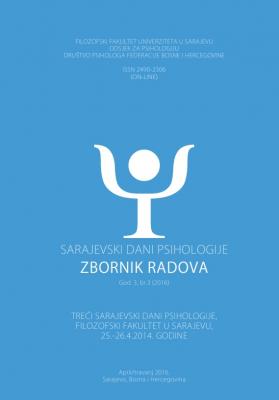Opterećenja u školi i obiteljska podrška kao determinante psihosomatskih reakcija mlađih adolescenata
School overload and family support as determinants of psychosomatic reactions of early adolescents
Author(s): Amela Dautbegović, Sibela Zvizdić MecoSubject(s): School education, Educational Psychology, Individual Psychology, Social psychology and group interaction, Behaviorism, Sociology of Education
Published by: Filozofski fakultet Univerziteta u Sarajevu
Keywords: school overload; psychosomatic reactions; younger adolescents;
Summary/Abstract: The research was conducted with the purpose to identify personal and social variables that determine psychosomatic reactions of early adolescents. We examined the contribution of predictor variables (gender, self-efficacy, self-esteem, the number of children per family, parents’ level of education, parental supervision, perceived social support from family, teachers and peers, dimensions of intimacy in friendship and student’s perception of school overload) in the explanation of psychosomatic reactions. The sample consisted of seventh and eighth grade students (N=400) from six Sarajevo Canton primary schools; 234 girls and 166 boys with an average age of 13.8 (SD=.76). The main survey was conducted in November and December 2009, and applied the following instruments: General Self-Efficacy Scale, Rosenberg SelfEsteem Scale, Parental Control Scale, Modified Scale of Perceived Social Support, Intimate Friendship Scale, School Overload Scale, Questionnaire of Psychosomatic Reactions and Questionnaire of Socio-Demographic Characteristics. Standard complete regression analysis indicated that five variables (gender, the student’s perception of school overload, perceived social support from family, perceived social support from peers and self-esteem) explaine the 24% variance of criterion measure of psychosomatic reaction. The coefficient of multiple correlation between the predictor variables and the above criteria is .49 (F=8.84; p=.00). Psychosomatic reactions of early adolescents can be best predicted on the basis of gender (β=-. 19, p=.00), student’s perception of school overload (β =.17, p =.00) and perceived social support from family (β =- .17, p=.00).
Journal: SARAJEVSKI DANI PSIHOLOGIJE: ZBORNIK RADOVA
- Issue Year: 3/2016
- Issue No: 3
- Page Range: 31-46
- Page Count: 16
- Language: Bosnian

